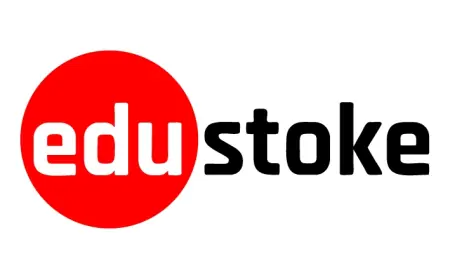Endpoint Protection Platform Market 2030 Report: Size Breakdown by Region
Industry Key Highlights
According to TechSci Research report, “Endpoint Protection Platform Market - Global Industry Size, Share, Trends, Competition Forecast & Opportunities, 2030F, The Global Endpoint Protection Platform Market was valued at USD 13.3 billion in 2024 and is expected to reach USD 26.1 billion by 2030 with a CAGR of 11.7% through 2030.
Endpoint Protection Platforms have evolved from basic antivirus and firewall solutions into sophisticated, multi-layered defense systems designed to secure a diverse range of endpoints — from laptops and mobile devices to IoT sensors and industrial control systems. This expansion mirrors the diversification of endpoint devices and the intensification of cyber threats, necessitating more comprehensive and adaptive security solutions.
Request For Sample Copy of Report For More Detailed Market insight: https://www.techsciresearch.com/sample-report.aspx?cid=17060#requestform
Expanding Attack Surface
A primary factor catalyzing market growth is the explosive adoption of Internet of Things (IoT) devices. As organizations embrace digital transformation, smart manufacturing, and connected infrastructure, the number of network-connected endpoints has multiplied exponentially. This growing ecosystem broadens the attack surface, exposing enterprises to increased risks from malware, ransomware, phishing attacks, and sophisticated zero-day exploits. Consequently, businesses require robust platforms capable of continuous monitoring, threat detection, and rapid response to safeguard their assets and data integrity.
Browse over XX market data Figures spread through XX Pages and an in-depth TOC on the "Global Endpoint Protection Platform Market"@https://www.techsciresearch.com/report/endpoint-protection-platform-market/17060.html
Integration of Artificial Intelligence and Machine Learning
Artificial Intelligence (AI) and Machine Learning (ML) have revolutionized endpoint security, enabling platforms to detect and mitigate threats with unprecedented speed and accuracy. These intelligent technologies analyze vast data sets to identify abnormal behaviors, predict emerging threats, and automate incident responses in real time. This capability is vital as cybercriminals deploy increasingly advanced and evasive tactics. By integrating AI/ML, EPP solutions move beyond traditional signature-based detection methods, offering proactive and predictive defense mechanisms.
Centralized and Unified Security Management
Another notable trend is the shift toward centralized security management through Unified Endpoint Management (UEM) platforms. Enterprises are gravitating towards consolidated solutions that streamline security administration, patch management, and compliance monitoring from a single interface. This approach enhances operational efficiency, reduces complexity, and accelerates threat remediation by providing security teams with holistic visibility and control over all endpoints across on-premise, cloud, and hybrid environments.
Increasing Cybersecurity Investments
Governments and private sectors globally have intensified investments in cybersecurity infrastructure, recognizing its strategic importance in protecting national security, economic stability, and consumer trust. Regulatory frameworks such as GDPR, HIPAA, PCI-DSS, and regional cybersecurity laws have mandated stringent data protection standards, compelling organizations to adopt comprehensive endpoint security measures. Incentives, grants, and policy support further stimulate market expansion by fostering an environment conducive to cybersecurity innovation and adoption.
Emerging Trends
AI-Powered Endpoint Security
Artificial Intelligence is increasingly embedded at the core of endpoint protection platforms, enabling adaptive learning and behavior-based threat detection. AI algorithms scan for anomalies that deviate from established patterns, facilitating early identification of novel attacks that traditional systems might miss. This trend is pushing vendors to enhance their AI capabilities and integrate them seamlessly with threat intelligence feeds for real-time contextual awareness.
Rise of Managed Security Services
The complexity and scale of cybersecurity challenges have driven many enterprises, especially small and medium-sized businesses (SMBs), to outsource endpoint protection to Managed Security Service Providers (MSSPs). These service providers offer 24/7 monitoring, incident response, and compliance management, allowing organizations to benefit from expert capabilities without the burden of building extensive in-house teams. This managed security service model is rapidly gaining traction, particularly in industries with critical data protection needs like healthcare, finance, and retail.
Cloud-Native and Hybrid Deployment Models
With the proliferation of cloud computing and hybrid IT environments, endpoint protection platforms are evolving to support flexible deployment options. Cloud-native EPP solutions offer scalability, ease of management, and seamless integration with other cloud services. Simultaneously, hybrid models that combine cloud and on-premise deployments address latency, data sovereignty, and regulatory concerns. This dual approach enables organizations to optimize their security architecture according to operational requirements.
Endpoint Detection and Response (EDR) Enhancement
EDR technologies are becoming a core component of endpoint protection strategies, providing deeper threat hunting, investigation, and remediation capabilities. Vendors are investing heavily in enhancing EDR functionalities by incorporating advanced analytics, forensics, and automated response playbooks. This evolution empowers security teams to proactively hunt threats and respond swiftly to minimize damage.
Expansion of Endpoint Security to IoT and OT Environments
As operational technology (OT) and IoT environments grow increasingly interconnected, endpoint protection platforms are adapting to secure non-traditional endpoints such as industrial control systems, smart meters, and medical devices. This expansion is driven by the need to protect critical infrastructure and prevent cyber-physical attacks, which could have severe operational and safety consequences.
Market Drivers
Digital Transformation and Remote Work
The global shift towards digital business models and hybrid work environments has exponentially increased endpoint proliferation. Employees accessing corporate networks from personal devices and remote locations create new vulnerabilities, necessitating robust endpoint security measures that ensure data protection beyond traditional corporate perimeters.
Growing Sophistication of Cyber Threats
Cybercriminals are continuously innovating their tactics, deploying polymorphic malware, fileless attacks, and ransomware that can evade legacy defenses. This arms race requires organizations to adopt next-generation EPP solutions capable of adaptive learning and multi-layered defense.
Regulatory Compliance Pressure
Data privacy and protection regulations across jurisdictions are compelling enterprises to implement stringent security controls at the endpoint level. Non-compliance carries substantial financial penalties and reputational risks, motivating companies to invest in comprehensive endpoint protection platforms that facilitate compliance auditing and reporting.
Increasing Adoption of IoT and Connected Devices
The surge in IoT adoption across sectors such as manufacturing, healthcare, and smart cities is expanding the endpoint ecosystem. Each new connected device represents a potential vulnerability point, driving demand for specialized security solutions designed to protect diverse and resource-constrained devices.
Demand for Operational Efficiency and Cost Optimization
Unified management and automation capabilities offered by advanced endpoint protection platforms help reduce manual security operations and improve response times. This operational efficiency is critical for organizations aiming to optimize cybersecurity spending while maintaining robust defense postures.
Solution Segment Analysis: Dominance of Services
Within the Endpoint Protection Platform market, the services segment—encompassing consulting, deployment, integration, managed security, and ongoing support—holds a commanding lead. This dominance stems from the increasing complexity of cybersecurity landscapes and the growing need for specialized expertise.
Many organizations lack the internal resources to deploy and manage advanced EPP solutions effectively, making outsourced services essential. Managed Security Service Providers play a pivotal role, particularly for SMEs, by delivering continuous threat monitoring, vulnerability management, and incident response without requiring heavy internal investments.
The shift toward cloud and hybrid security models further accentuates service demand, as ongoing configuration, optimization, and compliance management require expert intervention. Moreover, regulatory mandates necessitate thorough security assessments and custom solutions, further boosting consulting and professional services uptake.
Regional Growth Dynamics: Asia Pacific Leading the Charge
The Asia Pacific region is emerging as the fastest-growing market for endpoint protection platforms, propelled by rapid digital transformation initiatives, expanding IT infrastructure, and rising cybersecurity awareness. Nations including China, India, Japan, South Korea, and Singapore are witnessing significant adoption of digital technologies across financial services, healthcare, retail, and manufacturing sectors.
The escalation of ransomware and advanced persistent threats (APTs) targeting endpoints has heightened the urgency for robust security postures. Government regulations such as India’s Digital Personal Data Protection Act and Japan’s cybersecurity mandates are driving compliance investments and promoting local data sovereignty.
The region’s substantial SME base, often lacking extensive in-house cybersecurity capabilities, represents a large market for managed and cloud-based EPP services. Coupled with government-backed cybersecurity strategies and increasing internet penetration, Asia Pacific offers lucrative opportunities for vendors providing scalable, AI-enabled, and integrated endpoint protection solutions.
Competitive Analysis
The Endpoint Protection Platform market is characterized by intense competition among a mix of established technology giants and innovative cybersecurity specialists. Leading players include:
-
Microsoft Corporation: Leveraging its extensive cloud ecosystem and AI capabilities, Microsoft offers comprehensive endpoint protection integrated with its broader security suite.
-
Broadcom Inc.: Known for enterprise-grade security solutions, Broadcom delivers advanced EPP platforms emphasizing threat intelligence and automation.
-
Trend Micro Incorporated: A pioneer in endpoint and cloud security, Trend Micro focuses on AI-driven detection and hybrid environment support.
-
CrowdStrike Holdings, Inc.: Specializes in cloud-native EPP with robust EDR capabilities, offering real-time threat intelligence and response.
-
McAfee Corp.: Provides a broad portfolio of endpoint security solutions with strong presence in both consumer and enterprise segments.
-
Sophos Ltd.: Combines AI-based threat detection with managed services, catering extensively to SMEs.
-
SentinelOne, Inc.: Known for autonomous endpoint protection leveraging AI for real-time prevention and remediation.
-
Bitdefender LLC: Offers a comprehensive security suite with advanced machine learning and behavioral analytics.
These companies continuously innovate through R&D investments, strategic partnerships, and acquisitions to enhance product offerings and extend market reach. The competitive landscape is also shaped by emerging vendors specializing in niche areas like IoT security and cloud-native solutions, pushing incumbents to expand capabilities and improve integration.
Customers can also request for 10% free customization on this report.
Future Outlook
Looking ahead, the Endpoint Protection Platform market is poised for robust growth fueled by accelerating digitalization, expanding cloud adoption, and escalating cyber threats. Key future trends include:
-
AI and Automation: Increasing reliance on AI-driven automation for threat detection, remediation, and compliance will further enhance security efficacy.
-
Integration with Zero Trust Architectures: EPP solutions will play a crucial role in zero trust frameworks, continuously verifying endpoint integrity before granting access.
-
Expansion into IoT and OT Security: The market will see greater innovation targeting security for IoT and operational technology environments.
-
Edge Computing Security: As edge computing proliferates, endpoint protection will extend to edge nodes to ensure data security at the network periphery.
-
Increased Adoption in Emerging Economies: Rising digital adoption and regulatory emphasis in regions like Latin America, Africa, and the Middle East will open new markets.
These developments indicate a growing convergence between endpoint security, cloud security, and broader enterprise risk management strategies. Vendors that can offer integrated, scalable, and AI-enhanced solutions will capture significant market share.
10 Benefits of the Research Report
-
Comprehensive Market Size and Forecast Analysis — Enables strategic planning based on accurate market valuation and growth projections.
-
In-depth Competitive Landscape — Offers insights into leading players, market shares, and strategies to benchmark and position effectively.
-
Detailed Segmentation by Solution, Deployment, Application, and Region — Facilitates targeted market entry and product development strategies.
-
Identification of Emerging Trends and Technologies — Helps stakeholders stay ahead of innovation curves and invest in future-proof solutions.
-
Analysis of Market Drivers and Challenges — Equips decision-makers with a balanced understanding of growth enablers and obstacles.
-
Regulatory and Compliance Impact Assessment — Guides enterprises in aligning cybersecurity strategies with evolving legal requirements.
-
Customer Insights and Adoption Patterns — Enhances marketing and sales strategies by understanding end-user needs and preferences.
-
Service Segment Growth Analysis — Highlights the rising importance of managed services and consulting in cybersecurity.
-
Regional Market Dynamics and Opportunities — Supports localization strategies for vendors expanding into high-growth geographies.
-
Future Outlook and Scenario Planning — Assists in long-term investment decisions and risk management through forecast scenarios.
Contact US:
Techsci Research LLC
420 Lexington Avenue, Suite 300,
New York, United States- 10170
Tel: +13322586602
What's Your Reaction?
 Like
0
Like
0
 Dislike
0
Dislike
0
 Love
0
Love
0
 Funny
0
Funny
0
 Angry
0
Angry
0
 Sad
0
Sad
0
 Wow
0
Wow
0



















































